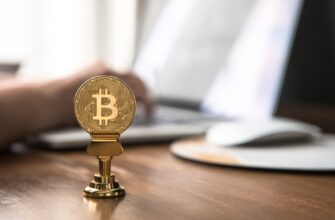What Is the Bitcoin Halving Countdown?
The Bitcoin halving countdown is a timer that tracks the remaining blocks until the next “halving” event, which slashes the reward miners receive for validating transactions. Occurring every 210,000 blocks (roughly four years), this event reduces Bitcoin’s inflation rate and has historically triggered major price rallies. With the next halving expected in April 2024, understanding the block mechanism behind it is critical for investors and crypto enthusiasts.
How the Bitcoin Halving Works: The Role of the Block
Bitcoin’s blockchain is a decentralized ledger composed of interconnected blocks. Here’s how blocks dictate the halving:
- Block Height: Each block mined increases the “block height” by 1. The halving occurs precisely at block 840,000 (April 2024).
- Block Reward: Miners currently earn 6.25 BTC per block. Post-halving, this drops to 3.125 BTC.
- Block Time: Bitcoin’s protocol adjusts difficulty to maintain a ~10-minute block time, ensuring predictable halving schedules.
Tracking the Bitcoin Halving Countdown: Tools and Tips
Stay ahead with these resources:
- Blockchain Explorers: Sites like Blockchain.com or Blockchair display real-time block height.
- Halving Clocks: Dedicated countdown tools (e.g., BitcoinHalving.com) estimate the halving date based on block averages.
- Mining Pools: Platforms like Foundry USA or AntPool often feature halving trackers for miners.
Why the Bitcoin Halving Countdown Matters
The halving impacts multiple stakeholders:
- Investors: Reduced supply often leads to price surges if demand stays steady (e.g., BTC rose 8,000% after the 2012 halving).
- Miners: Profitability hinges on post-halving Bitcoin prices and operational efficiency.
- Market Sentiment: Anticipation drives media coverage and speculative trading.
FAQ: Bitcoin Halving Countdown and the Block
Q: When is the next Bitcoin halving?
A: Expected around April 20, 2024, at block 840,000.
Q: How does the block count affect the halving date?
A: Delays or accelerations in block mining (due to network difficulty adjustments) can shift the date by days.
Q: Will the halving make Bitcoin prices go up?
A> Historically, yes, but past performance doesn’t guarantee future results. Macro factors like regulations or adoption also play roles.
Q: What happens after all 21 million Bitcoin are mined?
A: Around 2140, miners will rely solely on transaction fees, as block rewards will cease.








